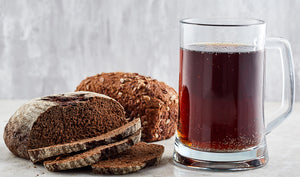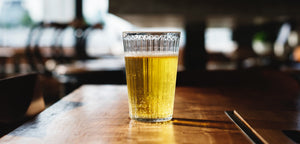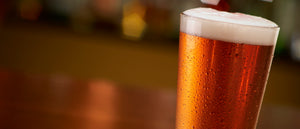
History
White IPA is what happens when an IPA and a witbier get friendly with each other. Unlike IPA and witbier which both have rich histories, the White IPA is a recently discovered style. This "accidental" beer came from a brainstorming session in 2010 between two brewmasters, Larry Sidor of Deschutes Brewery in Oregon, and Steven Pauwels, of Boulevard Brewing. Sidor was known for his hoppy brews at Deschutes, while Pauwels enjoyed brewing wheat beers at Boulevard. When the two decided to combine their favourite styles, the result was a crisp, hazy, moderately hoppy and lightly spiced IPA. Word quickly spread in the brewing world and craft breweries began creating their own witbier/IPA combination.
The White IPA was officially added to the BJCP Guidelines in 2015 as part of the "Experimental IPA" category.
Profile
A white IPA has a wide colour range, from light yellow to deep gold. This brew is hazy from the use of wheat in the grain bill. A large white head that lingers is a prominent feature of this beer.
This brew has a moderate bitterness, with an IBU range of 40 - 70, and an ABV that is higher than the usual witbier but within the range of a typical IPA (5.5 - 7%.).
Serving
White IPA is best served in an IPA glass or shaker pint at 8 - 10º C (46 - 50 ºF).
Food Pairing
White IPA are a great companion to Mexican cuisine and sharp cheeses. Reach for this brew instead of a regular IPA next time you have some fish & chips.



Brewing Tips
- Keep the Grain Bill Simple: This is not the brew to experiment with a complicated grain bill. Use 50-60% pale malt and 40-50% malted wheat. Your wheat can unmalted or a combination of both. Unmalted wheat will result in a lighter body and your brew will more similar to a traditional Begian Wit. Unmalted wheat also requires a cereal mash. Make sure you use rice hulls with this brew to avoid a stuck sparge.
- Hop To It: You may think because this is half witbier that hops aren't as important as the grain bill. But remember, this is also half IPA so you want your hops to shine, but not be overpowering. You will want some bitterness, but some spiciness as well. Try Cascade, Centennial or Amarillo.
- Speciality Ingredients: This is where you can really play up the witbier part of this brew. Bitter or sweet orange peel, coriander and even sage can take this brew to a new level.



